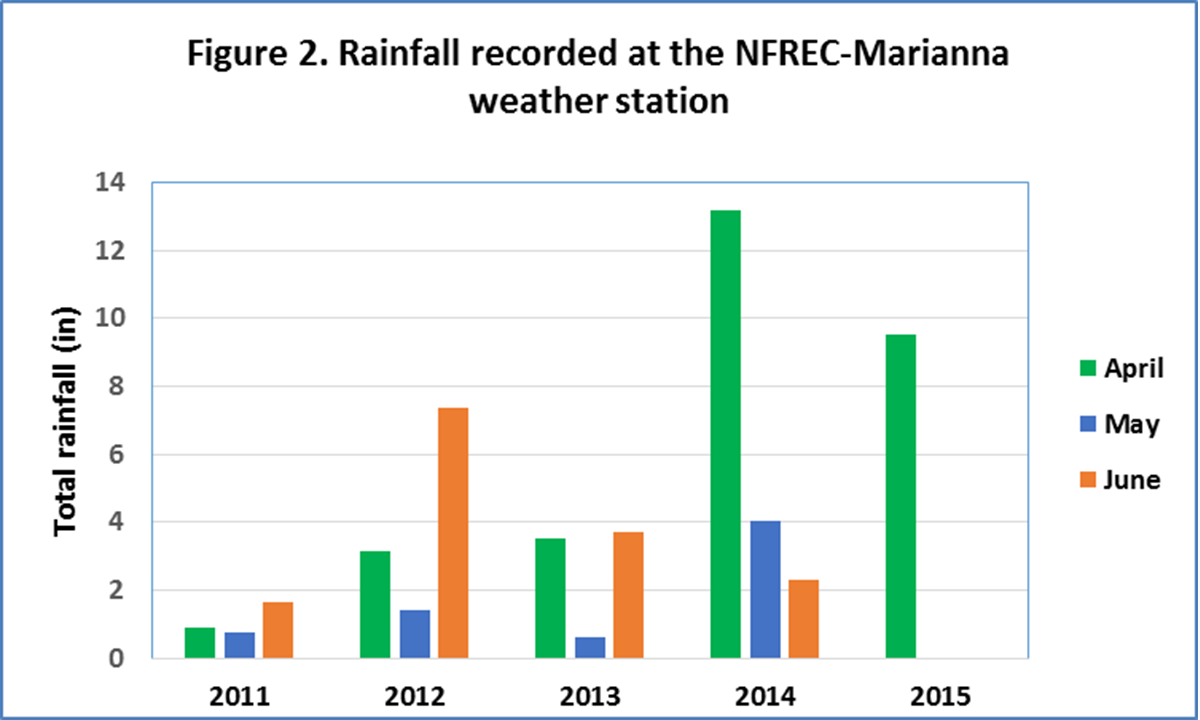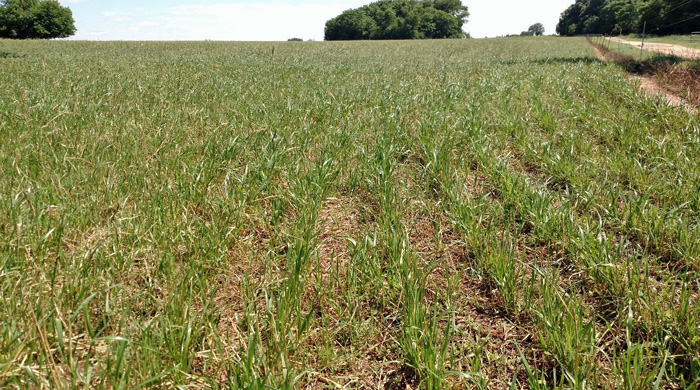Nicolas DiLorenzo, Beef Specialist, University of Florida NFREC
When it comes to beef cattle herd nutrition we often talk about two critical transition periods in Northwest Florida where we need to pay special attention to grazing management., and possibly even strategic supplementation.
The first critical period is at the end of the summer, when our warm season forages decline in production and quality, and the winter forages (if any have been planted) are still 45 to 60 days from being ready to graze, depending on planting method and rainfall. Bahiagrass, our predominant forage in Florida, is an excellent resource during the warm months of the summer, however when days begin to shorten (after June 21) the production and quality starts to decline despite the continuing high temperatures we may enjoy even as late as October. For example, a TDN content of 51% in bahiagrass harvested in mid-July can decline to 46 and 44% when harvested in August and October, respectively (SS-AGR-93: Factors affecting forage quality).
The second critical period is the one we are entering now, where winter grazing is ending and bahiagrass is not yet in full swing (see Fig. 1). If we consider rainfall patterns in the last four years using data from the NFREC-Marianna weather station, we can expect a significant drop in rainfall from April to May as seen in Figure 2. This creates a typical dry month of May in the Florida panhandle, before we can enjoy the relief brought by the summer storms beginning in June. Of course “typical” does not mean much anymore when we talk about weather. If we look at 2014, total rainfall in April was much greater than May and June, and considering what we have seen so far for April of 2015, we may repeat the situation. At this point, weather experts do not seem to indicate that drought may be a problem in June or July this year. However, given our soil conditions and high summer temperatures, two or three weeks without rain can change that forecast overnight as most of us well know.

Figure 2. Rainfall patterns in the last four years using data from the NFREC-Marianna weather station.
The current forage situation in the Panhandle (and Fig. 1 serves as a good example) reminds us of the potential of winter forages to grow very well into mid-May if conditions are right. In Fig. 1, taken on April 30, we can observe that most of the forage biomass is residual winter forages, while bahiagrass is slowly coming up (brown spots are still observed in between ryegrass rows). One of the main considerations during this transition period under current forage conditions is to pay attention to grazing management to avoid overgrazing of bahiagrass pastures. Keep in mind that the existing winter forage is not growing anymore, thus there may be a fine line between a situation like those in Fig. 1 and overgrazing of bahiagrass.
Take home messages:
-
Current conditions and weather predictions do not indicate high risk of summer drought, but conditions can change quickly.
-
Pay close attention to bahiagrass growth and rotate pasture grazing rapidly to avoid overgrazing.
-
Residual winter forage biomass may mask the slow growth of summer forages during the transition, which can quickly create a situation of overgrazed bahiagrass pastures that may take longer to recover.
- Stretching Hay Reserves is Critical during this “Flash Drought” - September 26, 2025
- 2025 Florida Bull Test Sale Sets Average Price Record - March 7, 2025
- Intake Limiters:Old Technology for Modern Beef Cattle Supplementation - September 20, 2024

